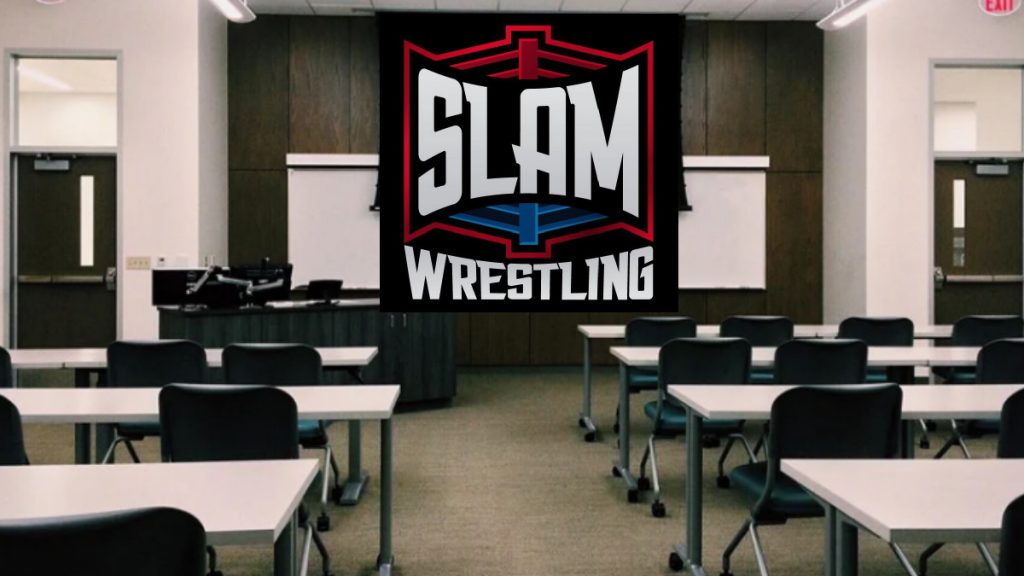North American college students are now into their first month of classes, which means that scores of courses and independent studies are being developed looking at the media, sports, popular culture and cultural history.
As educators are finalizing plans for class syllabi and students are thinking through topics they’d like to study, I’d like to pitch one idea that is not only a perfect fit for studying culture, but also of great interest to those who visit this site regularly: pro wrestling.
Through several years as a student and an instructor, I’ve found pro wrestling to be the perfect case study for studying popular culture, media theory and history. The publishers of SLAM! Wrestling kindly asked if I’d be willing to briefly share those experiences for readers here who are interested in how pro wrestling might fit into the academic space, or who are just interested in thinking through pro wrestling’s place in the world from an analytical perspective, and I hope what follows sparks some ideas for you.
When I started as an undergraduate at Western Kentucky University at the beginning of the decade, I was tasked with developing a thesis project for our school’s honors program.
What resulted was an interdisciplinary look at pro wrestling, which included:
- A textual analysis of Mick Foley’s character as representative of shifts in American popular culture and U.S. conceptions of masculinity and heroism through WKU’s English Department;
- A study of how WWE created a “transmedia” business model that engaged with fans through multiple platforms (print, live events, television, Internet, video games, etc.) through WKU’s School of Journalism and Broadcasting; and
- A study of the levels of engagement between pro wrestling fans and performers, based on discussion with wrestling fans at live events, through WKU’s Department of Communication.
In short, each discipline brought with it a distinctly different way to look at pro wrestling, and wrestling as a text provided a complex cultural object that could be examined from many angles.
My research culminated in a team-taught class at WKU in the School of J&B, along with a similar class I taught at MIT for the Program in Comparative Media Studies two years later. Those courses proved, if anything, that a semester was way too short to cover all that pro wrestling offers as a text for understanding performance theory, cultural studies, sociology, anthropology, media studies, television studies, fan studies, and a variety of other disciplinary angles.
Not only are there a handful of books dedicated to looking at pro wrestling from an academic perspective, there are decades of essays devoted to pro wrestling and sections of essays devoted to pro wrestling from cornerstone academics of a previous generation, such as Roland Barthes and Erving Goffman, to founders of more recent media studies schools of thought, such as John Fiske, Henry Jenkins, and the Media Education Foundation.
In the MIT class, we covered the cultural history of pro wrestling in the U.S., looking at how wrestling was brought into the country and its early development.
Our class followed the trajectory of pro wrestling in the U.S. chronologically, with a three-hour viewing lab each week and two weekly class meetings. We not only watched documentaries and read academic studies of wrestling, but we likewise watched the evolution of wrestling performances, discussing both how the characters and storylines changed but also how the physical performance evolved.
The course provided a chance for students to develop their own research projects, bringing their particular disciplinary interests to a common topic, and in the process instructing one another about how students in various majors approach a common topic.
In both cases, we were also blessed with the chance to bring in a variety of guest speakers from the wrestling world. At WKU, we were joined during the semester by Dave Meltzer and Mick Foley. And, at MIT, not only did scores of academics pass through town and join the class, but WWE co-sponsored the course and sent up Foley and Jim Ross, who both spent a few days with the class and thinking through greater issues behind the development of pro wrestling as a cultural phenomenon and as a performance art.
It may be rare as an instructor to be given the opportunity to talk on pro wrestling or as a student to be able to sign up for a class like this, but the topic makes for a great project to develop an independent study around or for a great module for classes about popular culture more broadly.
For anyone reading this who might be interested in thinking about how pro wrestling might make a great topic for study, first visit MIT’s OpenCourseWare page for my wrestling course. OpenCourseWare is an MIT initiative to publish a course so that interested individuals anywhere can follow the course. If nothing else, I’d encourage anyone interested to seek out the materials we covered in the class on your own. You can also visit our class blog from Spring 2007.
RELATED LINKS
Sam Ford, research affiliate with the MIT Convergence Culture Consortium and Director of Customer Insights with Peppercom, can be reached by email at samford@mit.edu.
